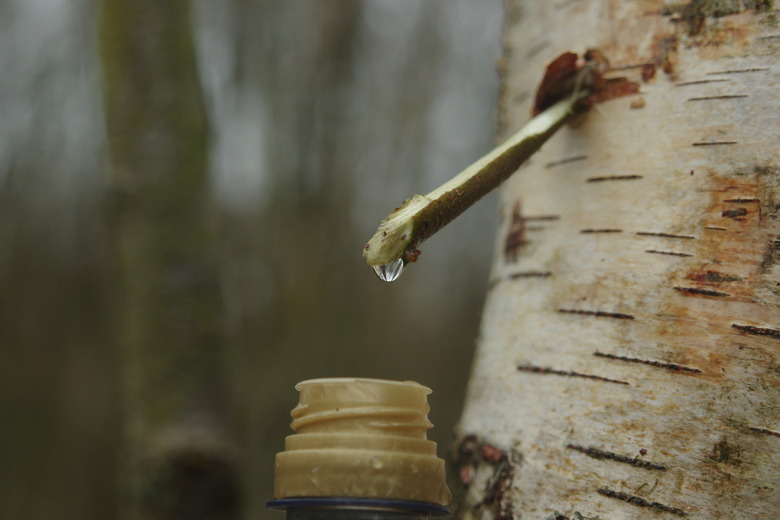What Is Tree Sap Used For?
There's nothing like the memory of weekends filled with indulgent breakfast foods and covering your plate with sugary maple syrup. As children, maple syrup seemed to be liquid gold from the heavens, but it's actually from tree sap, not a maple syrup tree. Although the final result is sticky goodness, tree sap is actually a watery substance that is the lifeline of a tree.
Tree Sap vs. Tree Resin
Tree Sap vs. Tree Resin
People often think that tree sap and tree resin are the same, but they're actually two completely different substances. Mostly all trees produce sap, but not all trees produce resin. Tree resin can be found in trees that belong to the Pinaceae family, such as pine, fir and cedar. Deciduous trees (a tree or shrub that sheds its leaves annually) don't produce resin as coniferous trees do, but coniferous or evergreen trees like pine, cedar and Douglas fir can produce both sap and tree resin.
What is Tree Sap?
What is Tree Sap?
When people reference tree sap, they're most likely referencing maple syrup. Maple syrup comes from maple trees in the form of sap. The sap is a clear and thin substance that's way more watery than resin.** The resin is an amber-colored, thick, gooey and tacky substance. When you get maple syrup from maple tree sap, it's mainly water with a mild, sweet taste, whereas resin is a gummy material that looks like glue and is used to make turpentine.
Two Forms of Tree Sap
Two Forms of Tree Sap
There are two ways that a tree uses sap. The first is from the water in the soil through the trunk and then it comes out through the leaf pores. Leaf pores, called stomata, are the minute pores in the epidermis of the leaf or stem of a plant, forming a slit of variable width that allows movement of gases in and out of the intercellular spaces. When the tree pulls water from the soil and through the roots, it's pulling mineral nutrients through.
The second way is when sap flows down the leaves towards the roots and other parts of the tree. The sap has sugar, or food, that the tree created in the leaves through the process of photosynthesis. **Photosynthesis is the process by which green plants and some other organisms use sunlight to synthesize foods from carbon dioxide and water.** Photosynthesis in plants generally involves the green pigment chlorophyll and generates oxygen as a byproduct.
What is Xylem Sap?
What is Xylem Sap?
Inside trees, there's a vital tissue called vascular tissue. There are two types of vascular tissue: xylem and sap-conducting tissue. Both of these vascular tissues produce sap. When you cut wood from a tree, that's basically xylem.
The thing about xylem, though, is that most of the vital functioning cells in the xylem are actually dead. The cell walls form a shell and the empty interiors are like tiny, interconnected straws that provide structural support and conduct sap throughout the interior of the tree.
Uses For Tree Sap
Uses For Tree Sap
One can use tree sap for a variety of things besides dousing pancakes and waffles. **The process of tapping a tree and turning maple tree sap into maple syrup and sugar was passed down from Native Americans to early settlers.** You can tap various trees to get sap. Since sap is the blood of the tree, there are vital mineral elements, hormones and other nutrients. Sap also creates carbon dioxide when it flows through the sapwood part of the tree.
Adhesives and Medical Dressings
Adhesives and Medical Dressings
When you boil down sap, it becomes a sticky tar-like substance. This substance is often used for waterproofing (it's believed that Noah used pine pitch to waterproof the Ark) and gluing things. You can also use sap to make wound dressings. Sap has astringent qualities that keep wounds from getting bacterial infections. If you create a wound dressing out of boiled-down tree sap, this will help to heal wounds.
Sap Chewing Gum
Sap Chewing Gum
You can also use pine sap to make chewing gum that's beneficial for your teeth. Gum is healthy for your teeth because it can clean out residual food particles and keep your mouth moist. Moistness in one's mouth can rebuild calcium in the teeth, and the increase of salivation helps food to digest in the stomach.
Pine Tar Soap
Pine Tar Soap
**Pine is a natural antiseptic,** so naturally back in the day people used pine tar soap. Chemical soaps are now a universal option, but pine tar soap is a really good soap to use. There are many recipes online that will show you how to turn pine tar into soap, and once you make it, you'll never want to buy chemical cleansers again.
Cite This Article
MLA
Dykes, Allanah. "What Is Tree Sap Used For?" sciencing.com, https://www.sciencing.com/what-is-tree-sap-used-for-12220531/. 15 March 2019.
APA
Dykes, Allanah. (2019, March 15). What Is Tree Sap Used For?. sciencing.com. Retrieved from https://www.sciencing.com/what-is-tree-sap-used-for-12220531/
Chicago
Dykes, Allanah. What Is Tree Sap Used For? last modified March 24, 2022. https://www.sciencing.com/what-is-tree-sap-used-for-12220531/
